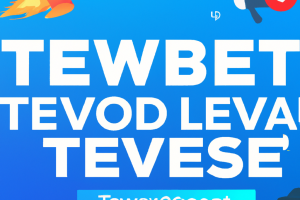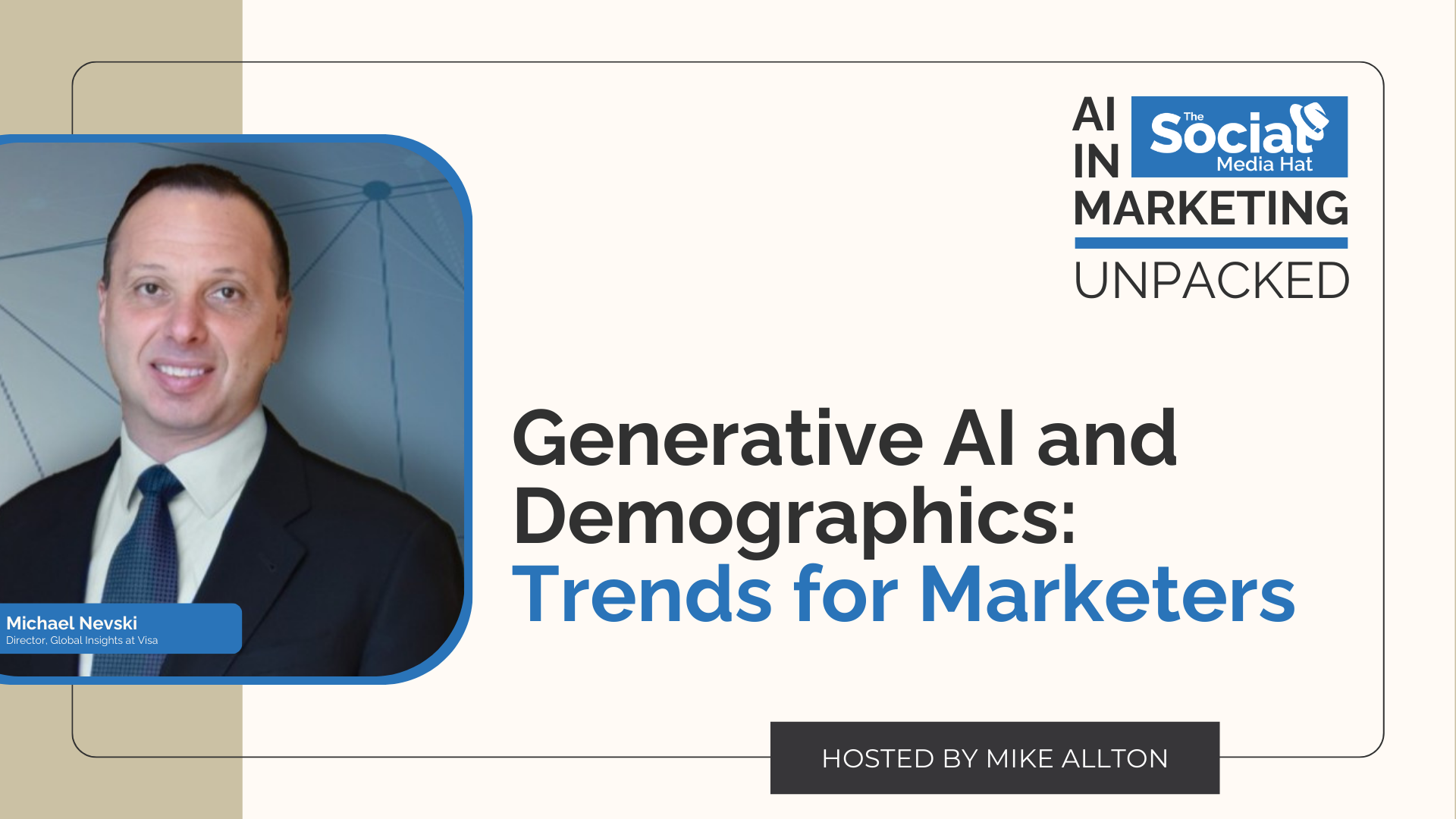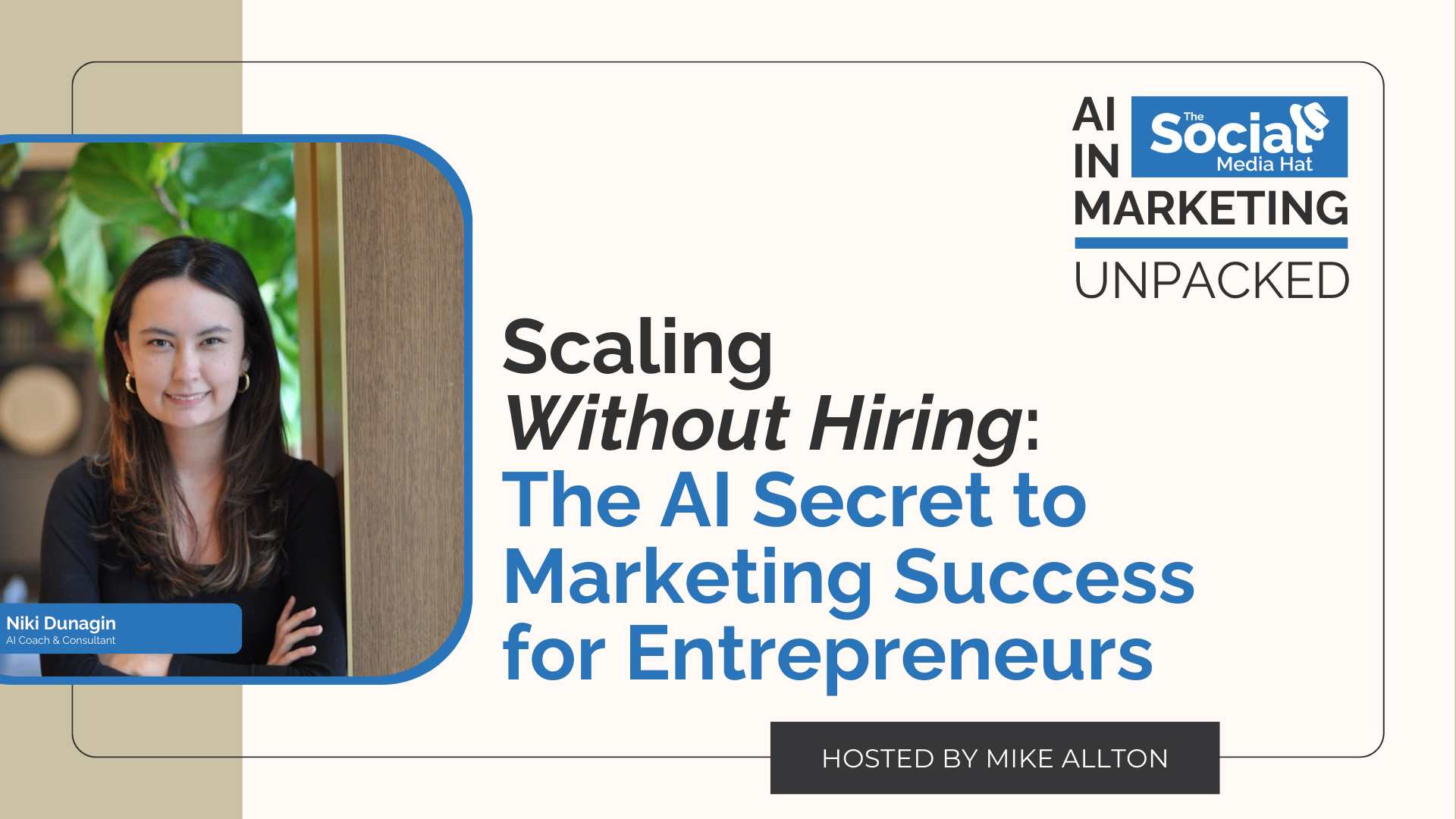Reading Time: 23 minutes
How do demographic trends among early adopters of generative AI shape consumer behavior?
In today’s fast-paced digital world, understanding how early adopters of generative AI behave is more critical than ever for marketers. To engage effectively, you’ve got to know the trends. Fortunately, we’ve got the perfect guide to help us navigate these waters.
Michael Nevski is a rockstar in the world of market research and data analytics from Visa. He’s spent his entire career turning data into actionable insights that drive business growth. With a knack for uncovering demographic trends and behavioral patterns, Michael’s insights have the power to transform marketing strategies.
LISTEN TO AI IN MARKETING: UNPACKED:
WATCH AI IN MARKETING: UNPACKED:
Today, we’ll learn how marketers can decode these trends to craft more effective campaigns, engage their audience better, and stay ahead of the competition. Get ready for some invaluable takeaways that will help you leverage generative AI to its fullest potential.
AI in Marketing: Unpacked host Mike Allton asked Michael Nevski about:
✨ Demographic Insights: Learn the key characteristics and motivations of early adopters of generative AI across different demographic segments.
✨ Behavior Trends: Gain an understanding of how shopping preferences and spending patterns vary among early AI adopters by age, gender, and income level.
✨ Marketing Strategies: Discover actionable strategies for leveraging demographic insights to effectively target and engage early adopters of generative AI.
Learn more about Michael Nevski
Resources & Brands mentioned in this episode
Full Transcript
(lightly edited)
Generative AI and Demographics: Trends for Marketers to Watch with Michael Nevski
[00:00:00] Michael Nevski: As a consumer, if I developed a relationship with my Gen AI assistant, and I started relying more and more on that, it’s not only what Generative AI collecting in terms of the recommendations and responses from other consumers, but probably there is an algorithm there, which built in considering other factors.
Let’s say if even people not providing high reviews for any particular brand, not even necessary product. At the same time, Generative AI perceives the brand overall based on what they do for the world, for community, social causes, still highly engaging. As we progress and technology gets better and becomes ubiquitous, people are going to start relying more and more and trusting more the technology.
Within the next two to three years, it’s very important to really understand for us as brands, understand how Generative AI will perceive our brands in terms of the recommendations and working with consumers.
[00:00:56] Mike Allton: Welcome to AI in Marketing: Unpacked, where we simplify AI for impactful marketing. I’m your host, Mike Allton here to guide you through the world of artificial intelligence and its transformative impact on marketing strategies. Each episode will break down AI concepts into manageable insights and explore practical applications that can supercharge your marketing efforts.
Whether you’re an experienced marketer just starting to explore the potential of AI, this podcast will equip you with the knowledge and tools you need to succeed. So tune in and let’s unlock the power of AI together.
Greetings program. Welcome back to AI in Marketing: Unpacked where I selfishly use this time to pick the brains of experts at keeping up with and integrating or layering artificial intelligence into social media, content, advertising, search, and other areas of digital marketing. And you get to learn to subscribe to be shown how to prepare yourself and your brand for this AI revolution and come out ahead.
Now, as marketers, we can often be found pouring over charts and infographics that help paint a picture of how certain social networks are being used or which devices or platforms consumers prefer so that we can craft and design marketing campaigns accordingly. Is AI having an impact on consumer behavior?
Specifically, I’m wondering how to demographic trends among early adopters of generative AI shape consumer behavior in today’s fast paced digital world, understanding how early adopters of generative AI behave is more critical than ever for marketers to engage effectively. You’ve got to know the trends.
Fortunately, we’ve got the perfect guide to help us navigate these waters. Michael Nevsky is a rockstar in the world of market research and data analytics from Visa. He spent his entire career turning data into actual insights that drive business growth. With a knack for uncovering demographic trends and behavioral patterns, Michael’s insights have the power to transform marketing strategies.
Hey, Michael, welcome to the show.
[00:02:50] Michael Nevski: Thank you so much, Mike. Pleasure to be here with you today.[00:02:55] Mike Allton: So glad to have you with us to guide us through this. Could you start by just sharing a bit about your background and how you got involved in market research and data analytics, especially focusing on consumer behavior?[00:03:06] Michael Nevski: Yeah, absolutely. Always for me, it was fascinating field, but I started my career in marketing and working on multiple marketing campaigns, building a direct marketing for B2B companies and B2C companies. I was always wondering how consumers make those decisions. They make why they say what they say.
One thing, but in actuality, dude totally opposite. And at a certain point of my career, I was trained in conducting B2B voice of the customer pretty much creating a discussion guide and having a one on one conversation and what we call it in depth interviews. And that triggered my deeper interest in learning more about insights and data analytics, and especially considering that market insights strategy really helps companies to achieve success in terms of the their shopper or client experience, bringing those memorable experiences and customization as well as identify white spaces and strategic directions for companies to grow their bottom line.
All those factors and combination with my. of natural curiosity, continue learning, continue understanding consumer mindset, because in the end of the day, whether you’re in B2B, B2C, or B2B2C you’re always dealing with human beings, us as people, whether we put our Put on a consumer hat or business to business hat.
We’re still humans and understanding how humans making those decisions and what the impetus or what the drivers, why they make those decisions is always fascinating for me. And that’s how I transitioned from marketing to the world of insights and data analytics when my career.
[00:04:55] Mike Allton: That truly is fascinating.
And I know I speak for many of the marketers listening when I say we have not had enough time or guidance to think about and get into the kinds of things that you’re talking about, even though we know we should. So I’m so glad to have you here to help us through this. So what sparked your interest when it comes to studying these early adopters of Gen AI?
[00:05:16] Michael Nevski: Oh, that’s a great question. And as you know, of course, there is a lot of buzzwords buzz, I would say buzzwords buzz on the street right now, whether it’s in my industry, many others about generative AI. And of course, companies, many companies looking at the more traditional way of how we can incorporate that internally, how we can utilize to be more efficient, more effective, saving time et cetera, et cetera.
But Same time, not a lot of companies thinking, in my opinion, from the consumer point of view, because what I see now that there is a trend of adapting generative AI for shopping, for doing some activities. And that’s what triggered my interest to dive deeper and understanding consumer side of things and how the whole dynamic of interacting assets brands with consumers might change.
And what I observe that actually, there is a three percentage points increase by American consumers in adapting the Generative AI for daily task and shopping activities. And not only brands needs to understand and incorporate the Generative AI technology that we have. Put it this way into their internal processes for employees and internal operations, but also they need to really start understanding the consumer side of things, why consumers using it, how they using it, who is using it, when they using it, and how brands can incorporate that technology into the touch points and shopper process shop path to purchase journeys.
To bring those memorable and customizable experiences very specialized, customized experiences to consumers.
[00:06:55] Mike Allton: This is a particular time. They were recording this on August 27th. We just got the announcement. I’m sure you probably saw it of Apple’s glow up or it’s glow time. I don’t remember exactly how they put it.
But that’s going to be, we all know their iPhone 16 announcement unveiling on September. Ninth, which this episode will have all will have come out afterwards. So Apple will have already released their latest iPhones, which is really going to, to your point, bring to the four consumer usage of AI every single day with Apple intelligence.
So could you give us an overview of some of the key characteristics and motivations of some of the folks who are early adopters in using AI in these ways?
[00:07:35] Michael Nevski: Absolutely. That’s a great question. So number one, look at main segmentation point. It’s about how people use the Generative AI. And then we will talk about some demographics and what in my research, what I see that There are four major segments.
One of them are heavy users. Those are who relying on technology on a daily, weekly basis. And I need to mention that about quarter of all consumers in the United States as of July of this year, according to our research, stated that they using the generative AI in the shopping process of daily activities weekly activities constantly.
So they’re very much involved and engaged with the technology. So that’s a high percentage already quarter, right? When we’re talking about what my 18 months of really technology being in place. So high adoption rate in general. And we predict that probably it’s going to continue increasing three percentage points every every quarter in the United States.
With that said besides the heavy users, those who biggest advocates of the technology most involved, you also have creative users, those who are looking for inspiration and looking to generate creative art, which is not readily available for traditional sources. The third one would be Those who are looking for efficiency.
I have a very chaotic life. Generative AI helped me to organize my life to make an order out of my chaotic life and the last but not least, those who really looking to learn something let’s say new languages, translations, new skills. So again, those are major applications of generative AI in general.
But when we start talking about. Who are they? Predominantly, of course, younger consumers. That means Gen Z and younger millennials. They’re highly educated at this point, because again, we’re talking about early adopters. If you remember when talking about kind of the, the, The curve, right? The adoption curve.
You have a early adopters, innovator, innovators, early adopters, early majority, late majority. So we’re not there yet when it’s completely mass scaled in terms of the adoption, but early adopters, they have those characteristics of being highly educated homeowners, high income earners definitely more affluent married.
And living predominantly in urban areas of the country. So, but I think that as we start moving along in terms of the adoption curve, I think we’re going to see more segmentation urban suburban, more income levels, more gender level, because right now actually females, a little bit dominating over males, if we take that split.
So, but. I think it’s going to be very even split going forward as well, because again, many more demographic segments of the country are adopting the technology for their shopping process.
[00:10:30] Mike Allton: It makes complete sense that the overall number of early adopters would be skewing younger. We’ve seen that in the past with other forms of technology and AI is so pervasive and so.
Nebulous and how it can be applied. You need to have that time and that space and that, that will to want to figure it out, so to speak. But I’m wondering also, how do the overall behaviors change when it comes to looking at early AI adopters across these different demographic segments that you talked about, age, gender, income level, how is the behavior changing?
[00:11:01] Michael Nevski: In terms of if you can be a little bit more specific when you talk about that, so maybe you can share with me in terms of changing the behavior as we progress, or what do you mean?[00:11:11] Mike Allton: I guess I’m thinking about wondering whether or not there’s changes in which tools they’re using, how they’re applying.
You talked about those applications a moment ago. Are you seeing a difference in the applications perhaps depending on the age, gender, that sort of thing?
[00:11:26] Michael Nevski: Oh, absolutely. That’s a great question. So, but before I answer your question if we kind of set up that type of understanding, how can you use the generative AI in this process, right?
So in terms of like a shopping and how people use it, you have a several use cases. One of them is personalization. And the other one created a recommendation list. Product reviews. You have also virtual try ons. You have customer service interactions more like an automation, right? So with that said, I see the differences when it comes to specific verticals.
Let’s say, you know, If I am doing shopping for grocery that’s the most popular category people use generative AI for. Then I started looking at the ingredients where it produced and stuff like that. So the product reviews but when it comes to Travel, for example, which is one of the top categories, which early adopters using generative AI for there are people looking for more of a curation and recommendations, right?
This is the place I want to go. Most of the time I already set my mind. I want to go to Caribbean. I want to go to Mexico, resorts, et cetera. But now I’m going there. Give me the best recommendations on where to stay, what to eat. What you do. So what the reviews are, what people are saying. So again, you need to kind of embrace that.
Not only Generative AI where it becomes just a source of information or searching the web. It’s also become kind of a personal relationship with consumers in terms of the relying on Generative AI as your personal assistant developing those relationship in us as brands. We need to understand that that’s a very interesting aspect of that.
And also you need to take into consideration that what I call heavy creative Productive or educational users of generative AI, they have a little bit different needs than if let’s say we talk about the creative folks, if they still shop for something creative, then they’re looking for something non traditional, okay, maybe experimentation I want to create the image and then I want to see if I can find something similar, like a picture of wall picture, right?
So can you help me with that? Almost like being creative from scratch. You’re not going to have a recommendations or reviews for that image if I want to buy something like that. So you see, those are different aspects of what people do. Another very interesting factor to consider when we look at when I look at early adopters of generative AI besides because of course it’s a function of age, but still they actually much more proactive in terms of the type of shopping experiences in terms of Let’s say early adopters in much higher rate saying that I would be very open to biometric payments because I want to have this flawless experience not to pull out any cards, money or anything like that.
Use my areas, right? IRS or something like that. So, and just get the product. I need you in one click on a website. But when we Ask that question. Have you experienced the biometric payments for each of those early adapters segments? I see that we have 10 percent margin on average difference between the demand.
I would like to use it versus those who use that. You see in that another opportunity for us as brands to create those experiences and customization of what Younger consumers and early adopters are requesting or demanding and many of them saying that if I don’t have that experience going forward It will divert me from shopping or interacting with that brand when i’m on the path to purchase journey So again, we need to think about those
[00:15:20] Mike Allton: That makes complete sense.
I’ve been testing an app on my phone called side chef, where it has recipes. I can add recipes and of course, you know, use that to put together a meal plan. But the really interesting gen of AI part is that it can use my camera to see what’s in my refrigerator, what’s in my pantry and help me build a menu based on a lot of the foods that I already have.
And to your point, it would then allow me to purchase through Walmart, I believe online, anything that I’m missing that I need for that. And that’s the part of the experience. I have not yet been bold enough to just jump into, it looks like it’s trying to buy a lot of stuff that I don’t necessarily need now to work through that and figure that out.
But those are the kinds of experiences I think consumers are now having every single day and all kinds of apps. And I’m wondering as you’ve been doing all this analysis, has there been anything that’s just really, Absolutely shocked you that you’ve just found surprising when it comes to trends or patterns or anything else that might have stood out to you.
[00:16:20] Michael Nevski: That’s a great question. That’s a great question. You, you know what? It was very surprising to me, although not as much in terms of the overall channel utilization. The fact that early adopters, younger people, Not only making purchases via social media, which was kind of a already known factor for my research, but they actually are gamers.
That was very surprising. Who would think about a gamer sitting in their parents dungeons and playing those games, right? So who knew, but apparently very high numbers of early adopters, again, Keep in mind, still some function of age utilizing, let’s say if we’re talking about heavy users, early adopters, Gen Gen Z and millennials, 66 percent of them actually are gamers using the playing the games.
And not only that, but they are much more involved with the mobile platforms, like who use utilizing their mobile phones versus console or something else, or their laptops. And not only the gamers, they’re making in game purchases. They’re very much involved, like 30 percent of gay heavy users.
For example, those who are involved with gaming and 66 those users play games on mobile. 30 percent of them make. In game purchases, what it creates, it creates another channel, an opportunity for us as brands to create experiences or experience virtual products with the delivery to the in offline to their place of living or any place they want with the almost immediate gratification.
So again, because they use that channel, not only to experience the product services or play games, gaining the entertainment, they also connecting with other people this way, especially younger generations. And not only that, they actually, many of them saying, that’s how I influence my circle of friends and community, because I am a gamer and my recommendations, especially product or services recommendations goes the long way.
I have that kind of a micro influence on my circle of communication and people around me. And that’s how I socialize and communicate with the world. And we need to keep that in mind as we’re moving forward as brands.
[00:18:45] Mike Allton: That is truly fascinating because gaming today is very different. When I was growing up, there’s they’re streaming to, to Twitch and other kinds of platforms.
So they have massive audiences who are watching them game, not necessarily gaming themselves. It’s incredible. We’ve talked about that on some of my other shows at a girl’s folks. We’re talking. With Michael Nevsky about the impact as having on consumers, particularly with early adopters. And in a moment, we’re going to uncover which channels specifically this is playing out.
But first let me share with you the tool I’m using every day to craft marketing strategies, brainstorm ideas, and generate copy. This episode of AI in Marketing: Unpacked is brought to you by Magai your gateway to making generative AI, incredibly simple. Wondering how to seamlessly integrate AI into your marketing strategy without getting bogged down by complexities?
That’s exactly where Magai shines. It provides user friendly AI solutions that empower marketers just like you to innovate and elevate your campaigns without needing a degree in science. Imagine having the power to generate creative content, insightful marketing data analysis, or even personalized customer communications all at the touch of a button.
Magai isn’t just about providing tools, it’s about transforming your approach to marketing with AI that’s tailor made to be straightforward and effective. So whether you’re looking to boost your content creation process or want deeper insights into your marketing performance, Magai makes it all possible with a few clicks, no fuss, no hassle, just results.
Ready to simplify your AI journey? Visit Magai today to learn how their solutions can revolutionize the way you engage with your audience. With your audience, don’t just market market smarter with Magai tap the link in the show notes. So Michael, you touched on shopping preferences and spending patterns a little bit.
You talked about the use of biometrics and the, you know, purchasing through social media, but I’m wondering if you could talk a little bit more about the ways that shopping preferences and spending patterns of early adopters might vary by demographic.
[00:20:44] Michael Nevski: That’s another good question. So when we talk about spending, And we’re talking about affluent people.
So what it means, it means in reality that usage of credit is much higher for them than traditional consumers. And also, they spending more on credit. Especially when we take the 1, 000 mark in terms of the 1, 000 mark spending on monthly expenses. So not only that, they prefer digital channels when they shop, especially unless it’s a grocery, but even with the grocery they still have some high rate of preference to go in Pick their own products, but that order online, pick up in store or grocery delivery is much higher and has a much higher rate among them.
Also higher preferences for subscription products. What it means we talk about subscription traditional as a streaming services, as maybe Amazon deliveries, although there is a big Amazon fatigue lately. I observed that actually many of them and higher numbers than all consumers Require or demanding the physical product subscription services.
Let’s say categories like health and wellness or beauty, like cosmetics, and we already know some of it, grocery, pet supply, household cleaning. So people don’t want to waste time by going into the store or even ordering online, they just want to subscribe to certain staple products and be delivered.
Let’s say every other month, certain quantity. And they want to deal with the variety of. providers, retailers, not necessarily Amazon, because like I said, there is that fatigue. And I think that’s what determines the differences between them and rest of the consumers. If we’re talking about demographics, they’re probably similar for early adopters.
Unless unlike actual segment. If we’re talking about, let’s say creative users, they are more involved with product subscription at a higher rate. Let’s put this way, especially when it comes to health and wellness or beauty products than other segments. And you need to look, let’s say, if we’re talking about educational, probably higher rate ownership rate for pets like educational segment those younger consumers probably have a higher real ownership rate and they subscribe more to pet supply products.
And that’s where we see the difference in terms of the spending patterns, how they prefer to purchase online and subscription.
[00:23:26] Mike Allton: That makes a lot of sense. I never enjoyed shopping in stores before, not that I don’t have to. I don’t, I buy my groceries online. We subscribe to your point, to the staples that we need and have them delivered on a regular basis.
So I don’t have to set foot in a grocery store or a big box store, you know, unless it’s some kind of really strange circumstance, but let’s bring it back to marketers now. So as marketers, how do we leverage this information? How do we take these kinds of , demographic insights, and use them to actually target and engage some of these early adopters more effectively.
[00:24:01] Michael Nevski: No, that’s a, another great question. First and foremost, you need to understand your consumers. And we’ve already been doing this kind of segmentation. Marketers still can utilize for party cookies. However, generative AI can help us to really learn deeper and understand those purchase patterns of behaviors much faster to deliver a real time or online experiences, live experiences much faster while our prospects or existing clients shop with us. And What generative AI can help really to become more efficient in terms of collecting the data from multiple sources, company sources, but also providing an understanding that consumer behavior, whether it’s male, female, understanding who is coming based on their browsing activity, previous activities.
So and provide a very customizable experience. For our shoppers, for our clients and marketers need to utilize that, whether it’s a specialized product reviews or your targeting promotion. So generative AI can collect that data much faster, analyze it and provide recommendations, and that’s where I see the biggest impact for generative AI for the company on the company side for marketers.
When it comes to consumers. Like we talk about it’s an expectation of more personalized experience just for me, not anybody else. And give me something unique. Not only in terms of the reviews or experience, but also I want to have some more unique products, even to the product manufacturing customization, when it’s possible, because I want to feel very unique and very particular.
[00:25:45] Mike Allton: That’s so interesting because on the one hand, you’ve got generative AI being used more and more by the consumers. And that’s playing into their spending habits and shopping habits. And on the other hand, we also have the ability to simply use generative AI as marketers to help us understand what they’re doing and help us craft campaigns.
Like I talked about side chef earlier, you know, Tyson, a meat seller. In that space could be working with influencers and creating recipes and working alongside with side chef and helping consumers like myself, understand how to use the app to purchase a chicken and, and then use the stuff that we have in our pantries to create some amazing recipes.
That’s just one idea. Then there’s all kinds of things, obviously, that marketers could do. Let’s talk about channels. Are there any specific channels or, or platforms where AI adopters are more active?
[00:26:36] Michael Nevski: That’s a great question again. You impressed me today, Mike. So thank you for asking all those smart questions.
The number one, I feel digital when we talk about digital, of course, mobile younger consumers have a tendency to do more business on mobile. Definitely when it comes to platforms, one of them, Reddit where people can ask lots of questions, interact because when we talk about those communities per se, right, that’s where people get together and have a similar interest and discuss how they can leverage new technology what else they can do.
And I think that’s one of those platforms, which is very popular right now among early adopters. But also you need to consider traditional sources of information when it comes to digital. That means YouTube, people watch videos, Instagram, definitely sharing images, especially when it’s a virtual try on images.
And we can talk about those later, but like Google and Sephora is using that for cosmetics and stuff. So, but also besides more traditional social media sites, because they might have communication groups. I’m not going to talk about more specific technology groups. Those who are interested in general A I as a technology and application of that for again, more of a company side or developing technology and integrating with other sources. But when it comes to consumer facing sites where consumers can actually Share best practices, how they’re using it or learning from others. I think those are more traditional social media, including Reddit.
So would be the choice of channel for them within that omni digital channel. But also keep in mind another factor of that. Nowadays the seasonality is going away. It’s almost like people, consumers shop on like this shopping a mod is on constantly, although yes, we have seasonal like holidays, black Fridays, et cetera.
It’s however, People not waiting any longer till that black friday very often when they need something especially Again continue with that theme of customer gratification as well as desire to have this special and unique And company is trying to adopt and accommodate for that Having almost that Kind of a sales more the upper Andy offering consumers some kind of a deals constantly look at some brands like Costco and many others where they have a special type of promotions around the year.
So what we see that consumers shopping. More consistently the omni channel and it predetermines their behavior that they constantly and consistently looking for that type of information that you asked me about by going to social media sites, by sharing that information for community websites and really trying to figure out what’s the best way, what’s the best way, excuse me, to adapt the technology and use it for their personal use.
[00:29:49] Mike Allton: Huh, Reddit, I think you’re the first person to come on this show and talk about Reddit. And in fact, I would say of my five other shows on Agorapulse, covering all aspects of marketing verticals, still no one else has ever talked about Reddit. So I’m really curious, those of you watching, particularly if you’re on YouTube, Drop me a comment.
Let me know. Yes or no. Are you using Reddit? Are you paying attention to the conversations that are happening in Reddit? That’s that’s just not come up in this show. And I appreciate you raising that point, Michael. And I’m wondering if you couldn’t share a case study maybe an example where a brand has successfully used these kinds of demographic insights to enhance their AI driven marketing strategy.
[00:30:29] Michael Nevski: So what? And I’m not gonna call brands probably, but one of them was a famous coffee chain and kiss are where they really utilize the generative AI by a collecting the mobile orders via you via the mobile application and applying the technology to save time and accuracy bringing listening.
data into this kind of analysis in terms of the interactions online, offline phone, and really creating curated recommendations in this. And like I said, utilizing geotargeting as well as demographics, whether you Based on your gender, based on your preferences, male, female, if there are any differences there, and that’s how they were able to create a customization.
But lately what I see also many brands started to incorporate generative AI technology into the process because there is more demand by consumers to use the technology when they shop, as I talked about it earlier. Like for example, Sephora, a virtual artist app. which helps you to virtually try some of the cosmetics they offer or virtual try ons by Google and some others.
I also know that grocery retail in France care for utilizing the chat bot application. And it’s kind of a chat GPT application where they offer real time product suggestions. And they consider like income. or budget, some dietary preferences, and also feeding what you were talking about, the chicken Tyson some menu ideas based on that, based on the type of products you eat, they’re based on your ingredient preferences and also your kind of a budget or income average money you spend a poor transaction of Paul visit virtual or in store visit.
So, and those create those customizable experiences, very memorable and very narrow focused and people feel that this is specifically for them. And it’s very unique. So those are use cases. And it’s still nascent to be honest with you, as you can see worldwide and U S in particular, we still going through this face of crossing that chasm with early adopters.
We haven’t hit it yet. Early majority, at least 30 40 percent of the market. So, but when it becomes ubiquitous, many brands going to start playing catch up game. But we already see that there is a certain degree of adoption by many brands. Of Generative AI from the external consumer facing standpoint of view.
[00:33:11] Mike Allton: That’s exactly right. And that frankly echoes why we’re doing this show in the first place is to help all of my marketing colleagues, friends, business owners, not get left behind. not be too far behind, but to get ahead of this AI revolution because it is in fact a revolution. It’s permeating every aspect of our society.
It’s the fourth industrial revolution, as I’ve talked about before. I’m wondering from a last question, Michael, if you could just kind of get out your crystal ball and look ahead, what kinds of future trends do you see in the adoption of Gen AI, and how should marketers prepare for these kinds of developments?
[00:33:45] Michael Nevski: So before I answer your question again, I want to set the stage by saying that it’s not only how market was going to adopt those generative AI trends in terms of the consumer adoption, but it’s also how us as brands we represent are going to be perceived or recommended by generative AI. And that’s the very important aspect, because if I develop as a consumer, if I developed a relationship with my gen AI assistant, whatever particular brand I use, and I started relying more and more on that, it’s not only what generative AI collecting in terms of the recommendations and responses from other consumers. But probably there is an algorithm there which built in considering other factors. Let’s say if even people not providing high reviews for any particular brand, not even necessary product. At the same time, generative AI perceives the brand overall based on what they do for the world, for community, social causes, still highly engaging.
Am I pivot that as such? And people are going to start relying more and more on those recommendations versus pretty much doing the double checking and say, okay, let me now go to actual human community and double check that. That this is absolutely true, and I can completely trust that in the definitely at this phase.
With hallucinations still in place and many aspects of this technology not being plugged in into the real time and environment search and stuff. People still take it with a grain of salt, definitely. But as we progress and technology gets better, better and becomes ubiquitous. People are going to start relying more and more and trusting more the technology within next two to three years.
I think it’s going to be a huge pivot. Some some researchers saying that experts that it might happen within a year or so, maybe, but same time, like I said, it’s very important. To really understand for us as brands, understand how Generative AI will perceive our brands in terms of the recommendations and working with consumers.
That’s number one. If we’re talking about some of the other adoptions, how can we Be more creative when we use generative AI internally as marketers. So what else can we use? Maybe AI as a service models. If you remember that SaaS aspect of it, where AI really acts behind as a main power engine by getting all the information from your.
Transactional data from your CRM data from your marketing automation data from your sales and operations data, customer service, CX even digital UX UI and really trying to analyze and create the patterns and do it much faster to really manage the enterprise level experience. For individual customers.
That’s what I called mass scaled customization, where lots of aspects of customer interactions or consumer interactions with us again, B to B, B to C will be very unique and very customizable. I think generative AI is going to help us kind of that banking term. K. Y. I know your K. Y. C. Excuse me. Know your customer.
I think generally we are going to help us to really predict and forecast even before we have an interaction with potential customer existing customer before they come online before they pick up that phone and call us or use the chat, we would already know a lot about the customers and provide those customers customized experiences and another aspect contributing to that, that I see that younger generations, they’re much more open to share information about themselves.
In return for those Customizable and effective and efficient in terms of the timing experiences where they where they don’t need to do lots of efforts or conduct like lots of research work, but to get what they need and a very customizable fashion and the last but not least. The trend, how generative AI is going to evolve because overall AI has been there in place for a long time, Internet of Things using that for fraud prevention or risk and banking industry.
But how is it going to evolve? And what else is well, we can, how else we can utilize generative AI in terms of the retail, in terms of the interactions, or maybe pretty much removing that barrier between them, between the front end and back end of our brands for consumers, where they can flawlessly interact with everybody and anybody within the company the way, how they want it.
So those are probably three key trends. I can see in my crystal ball, but I’m not a God. So who knows? I’m just a human and those are kind of my educated guess predictions.
[00:38:40] Mike Allton: Well, Michael, I couldn’t agree more with those. And in fact, I really appreciate your point about how brands need to be paying more and more attention to how they’re showing up.
Inside of generative AI responses, we’ll probably have to do an entire episode soon about generative engine optimization over search engine optimization and thinking about the differences and similarities of both. But Michael, this has been an incredibly insightful episode. Thank you so much for those who want to know more.
Maybe they want to reach out and have you speak at their organization or have questions. Where can they go to find and connect with you?
[00:39:10] Michael Nevski: LinkedIn definitely also conferences, meet me there. I presented a lots of research conferences, CX conferences, marketing conferences and definitely connect with me on LinkedIn.
Happy to network and share and learn from you as well.
[00:39:26] Mike Allton: Terrific. Thanks, Michael. Thank you all of you for listening. That’s all the time we’ve got for today, friends, but please note, if you’re interested in seeing the full video version of the show, you can find it on Spotify and now on YouTube, where you can drop me a comment or a question at any time until next time, welcome.
Thanks for joining us on AI in marketing unpacked. I hope today’s episode has inspired you and given you actionable insights to integrate AI into your marketing strategies. If you enjoyed the show, please subscribe on your favorite podcast platform and consider leaving a review. We’d love to hear your thoughts and answer any questions you might have.
Don’t forget to join us next time as we continue to simplify AI and help you make a real impact in your marketing efforts until then keep innovating and see just how far AI can take your marketing. Thank you for listening and have a fantastic day.

Related
Discover more from The Social Media Hat
Subscribe to get the latest posts sent to your email.









